
Green building refers to both a structure and the application of processes that are environmentally responsible and resource-efficient throughout a building's life-cycle: from planning to design, construction, operation, maintenance, renovation, and demolition. This requires close cooperation of the contractor, the architects, the engineers, and the client at all project stages. The Green Building practice expands and complements the classical building design concerns of economy, utility, durability, and comfort. Green building also refers to saving resources to the maximum extent, including energy saving, land saving, water saving, material saving, etc., during the whole life cycle of the building, protecting the environment and reducing pollution, providing people with healthy, comfortable and efficient use of space, and being in harmony with nature. Buildings that live in harmony; green building technology focuses on low consumption, high efficiency, economy, environmental protection, integration and optimization.’

Climate change mitigation (or decarbonisation) is action to limit the greenhouse gases in the atmosphere that cause climate change. Climate change mitigation actions include conserving energy and replacing fossil fuels with clean energy sources. Secondary mitigation strategies include changes to land use and removing carbon dioxide (CO2) from the atmosphere. Current climate change mitigation policies are insufficient as they would still result in global warming of about 2.7 °C by 2100, significantly above the 2015 Paris Agreement's goal of limiting global warming to below 2 °C.
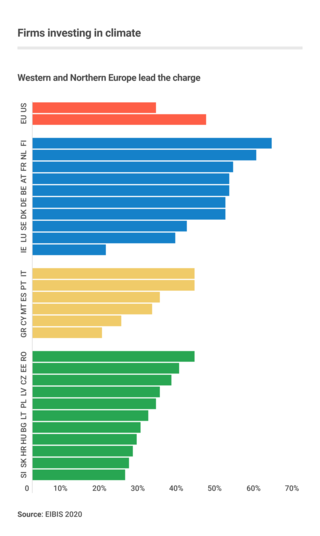
Business action on climate change is a topic which since 2000 includes a range of activities relating to climate change, and to influencing political decisions on climate change-related regulation, such as the Kyoto Protocol. Major multinationals have played and to some extent continue to play a significant role in the politics of climate change, especially in the United States, through lobbying of government and funding of climate change deniers. Business also plays a key role in the mitigation of climate change, through decisions to invest in researching and implementing new energy technologies and energy efficiency measures.
Eco commerce is a business, investment, and technology-development model that employs market-based solutions to balancing the world's energy needs and environmental integrity. Through the use of green trading and green finance, eco-commerce promotes the further development of "clean technologies" such as wind power, solar power, biomass, and hydropower.
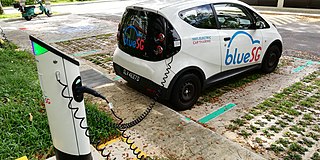
Clean technology, also called cleantech or climatetech, is any process, product, or service that reduces negative environmental impacts through significant energy efficiency improvements, the sustainable use of resources, or environmental protection activities. Clean technology includes a broad range of technology related to recycling, renewable energy, information technology, green transportation, electric motors, green chemistry, lighting, grey water, and more. Environmental finance is a method by which new clean technology projects can obtain financing through the generation of carbon credits. A project that is developed with concern for climate change mitigation is also known as a carbon project.
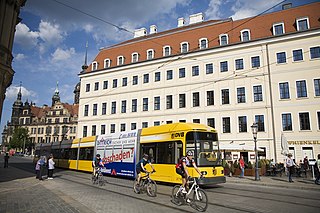
A sustainable city, eco-city, or green city is a city designed with consideration for the social, economic, and environmental impact, as well as a resilient habitat for existing populations. This is done in a way that does not compromise the ability of future generations to experience the same. The UN Sustainable Development Goal 11 defines sustainable cities as those that are dedicated to achieving green sustainability, social sustainability and economic sustainability. In accordance with the UN Sustainable Development Goal 11, a sustainable city is defined as one that is dedicated to achieving green, social, and economic sustainability. They are committed to this objective by facilitating opportunities for all through a design that prioritizes inclusivity as well as maintaining a sustainable economic growth. Furthermore, the objective is to minimize the inputs of energy, water, and food, and to drastically reduce waste, as well as the outputs of heat, air pollution. Richard Register, a visual artist, first coined the term ecocity in his 1987 book Ecocity Berkeley: Building Cities for a Healthy Future, where he offers innovative city planning solutions that would work anywhere. Other leading figures who envisioned sustainable cities are architect Paul F Downton, who later founded the company Ecopolis Pty Ltd, as well as authors Timothy Beatley and Steffen Lehmann, who have written extensively on the subject. The field of industrial ecology is sometimes used in planning these cities.
Design for the environment (DfE) is a design approach to reduce the overall human health and environmental impact of a product, process or service, where impacts are considered across its life cycle. Different software tools have been developed to assist designers in finding optimized products or processes/services. DfE is also the original name of a United States Environmental Protection Agency (EPA) program, created in 1992, that works to prevent pollution, and the risk pollution presents to humans and the environment. The program provides information regarding safer chemical formulations for cleaning and other products. EPA renamed its program "Safer Choice" in 2015.

A low-carbon economy (LCE) is an economy which absorbs as much greenhouse gas as it emits. Greenhouse gas (GHG) emissions due to human activity are the dominant cause of observed climate change since the mid-20th century. There are many proven approaches for moving to a low-carbon economy, such as encouraging renewable energy transition, energy conservation, and electrification of transportation. An example are zero-carbon cities.
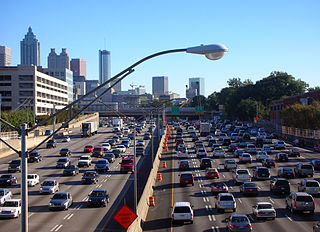
The United States produced 5.2 billion metric tons of carbon dioxide equivalent greenhouse gas (GHG) emissions in 2020, the second largest in the world after greenhouse gas emissions by China and among the countries with the highest greenhouse gas emissions per person. In 2019 China is estimated to have emitted 27% of world GHG, followed by the United States with 11%, then India with 6.6%. In total the United States has emitted a quarter of world GHG, more than any other country. Annual emissions are over 15 tons per person and, amongst the top eight emitters, is the highest country by greenhouse gas emissions per person.

Sustainable development in Scotland has a number of distinct strands. The idea of sustainable development was used by the Brundtland Commission which defined it as development that "meets the needs of the present without compromising the ability of future generations to meet their own needs." At the 2005 World Summit it was noted that this requires the reconciliation of environmental, social and economic demands - the "three pillars" of sustainability. These general aims are being addressed in a diversity of ways by the public, private, voluntary and community sectors in Scotland.

A zero-carbon city is a goal of city planners that can be variously defined. In a narrower sense of energy production and use, a zero-carbon city is one that generates as much or more carbon-free sustainable energy as it uses. In a broader sense of managing greenhouse gas emissions, a zero-carbon city is one that reduces its carbon footprint to a minimum by using renewable energy sources; reducing all types of carbon emissions through efficient urban design, technology use and lifestyle changes; and balancing any remaining emissions through carbon sequestration. Since the supply chains of a city stretch far beyond its borders, Princeton University's High Meadows Environmental Institute suggests using a transboundary definition of a net-zero carbon city as "one that has net-zero carbon infrastructure and food provisioning systems".

myclimate was spun off from the Swiss Federal Institute of Technology Zurich in 2002 as a nonprofit climate protection organisation based in Switzerland to enable climate protection with economic mechanisms such as price-tagging carbon dioxide and integrating the externality into the market. They promote climate protection on three levels: avoidance techniques such as capacity building and teaching, reduction and carbon offsetting. myclimate advocates for the development of a carbon market while setting new standards in carbon emissions and in designing a sustainable society.

Energy in Switzerland is transitioning towards sustainability, targeting net zero emissions by 2050 and a 50% reduction in greenhouse gas emissions by 2030.
The smart grids in South Korea constitute a platform that is re-imagining electricity grids, equipping it with technology that allows more capability, particularly in addressing the demands of the 21st century and the future. This process follows a modular approach to grid construction and focuses on the development of the IT-enabling of its electric power generation system. The country views the smart grids, along with the so-called "new energy industries", as an emergent pillar of the Korean economy.
CALIFORNIA SUSTAINABILITY ALLIANCE
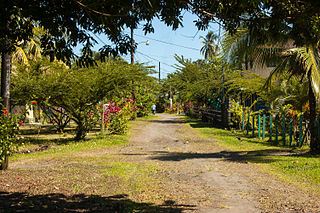
Green urbanism has been defined as the practice of creating communities beneficial to humans and the environment. According to Timothy Beatley, it is an attempt to shape more sustainable places, communities and lifestyles, and consume less of the world's resources. Urban areas are able to lay the groundwork of how environmentally integrated and sustainable city planning can both provide and improve environmental benefits on the local, national, and international levels. Green urbanism is interdisciplinary, combining the collaboration of landscape architects, engineers, urban planners, ecologists, transport planners, physicists, psychologists, sociologists, economists and other specialists in addition to architects and urban designers.
Steven J. Davis is an earth system scientist in the Department of Earth System Science of the Stanford Doerr School of Sustainability at Stanford University. He is a highly cited researcher and leads the Stanford Sustainable Solutions Lab.

Factory Microgrid is a demonstrative project cofinanced by the LIFE+ 2013 programme of the European Commission and whose origin can be explained within the framework of the 20-20-20 challenge of the European Union to reduce CO2 emissions and energy consumption. More specifically, it can be framed in theme 1, "Climate Change", and within the line of action "Development of innovative practices for the management of smart grids in the context of highly decentralized production of renewable energy". Its main objective is to demonstrate through the implementation of a full-scale industrial smartgrid that microgrids can become one of the most suitable solutions for energy generation and management in factories that want to minimize their environmental impact. At a national level, it is one of the first experiences regarding the implementation of a smartgrid in an industrial plant with and integrated fleet of electric vehicles. Factory Microgrid will take place between July 2014 and June 2017, and represents an investment of around 2 million euros. Approximately 50% of the total amount will be financed by the LIFE+ programme. Project partners are the Jofemar Corporation and the National Renewable Energy Centre, CENER. Isabel Carrilero (Jofemar) is the Project Manager.

ECOCITIES is an energy optimization system for building portfolios combining and extending the benefits of Energy Management Software (EMS), Computer-aided Facility Management (CAFM) software and building portfolio management software. It integrates building administration and monitoring, energy accounting and building portfolio optimization. Thereby, it supports the definition of low carbon action plans in terms of environmental impact and financial impact.
The environmental impact of Big Tech is a phenomenon in which many aspects of Big Tech contribute to negative impacts on the environment and climate change. In the big data age, technologists and people in general find it valuable to view emerging technologies with a critical lens, one of which is geared toward the environment. As these emerging technologies become more popular, they consider the extent at which they contribute to changes in the environment and whether they are inherently positive or negative.













